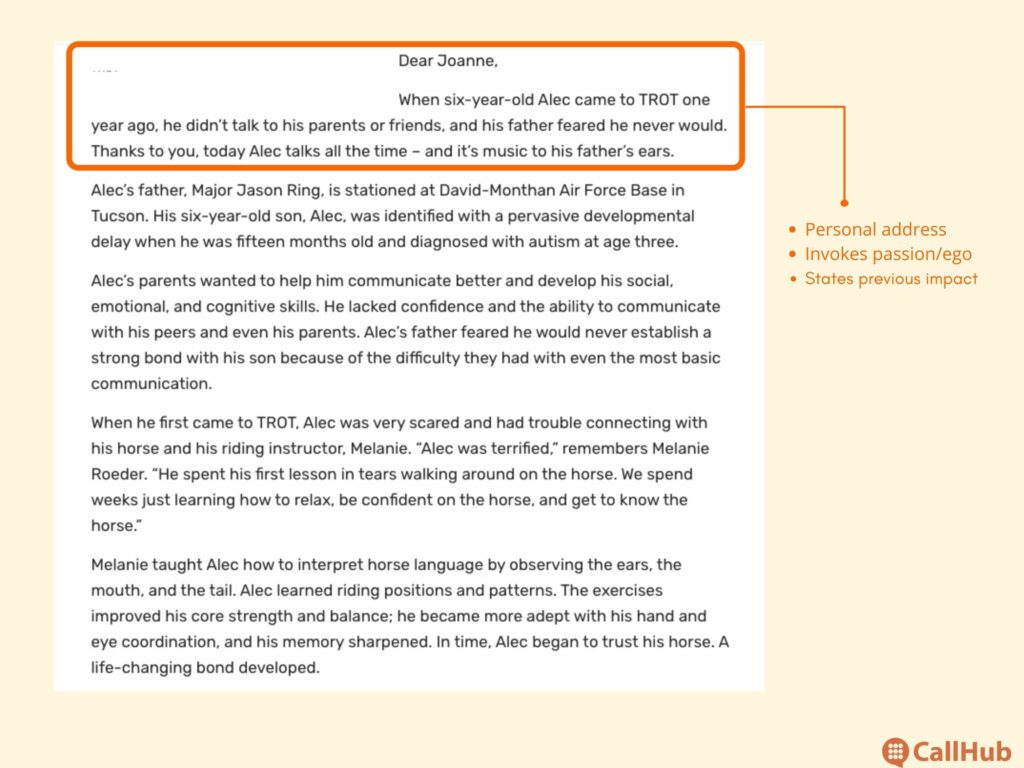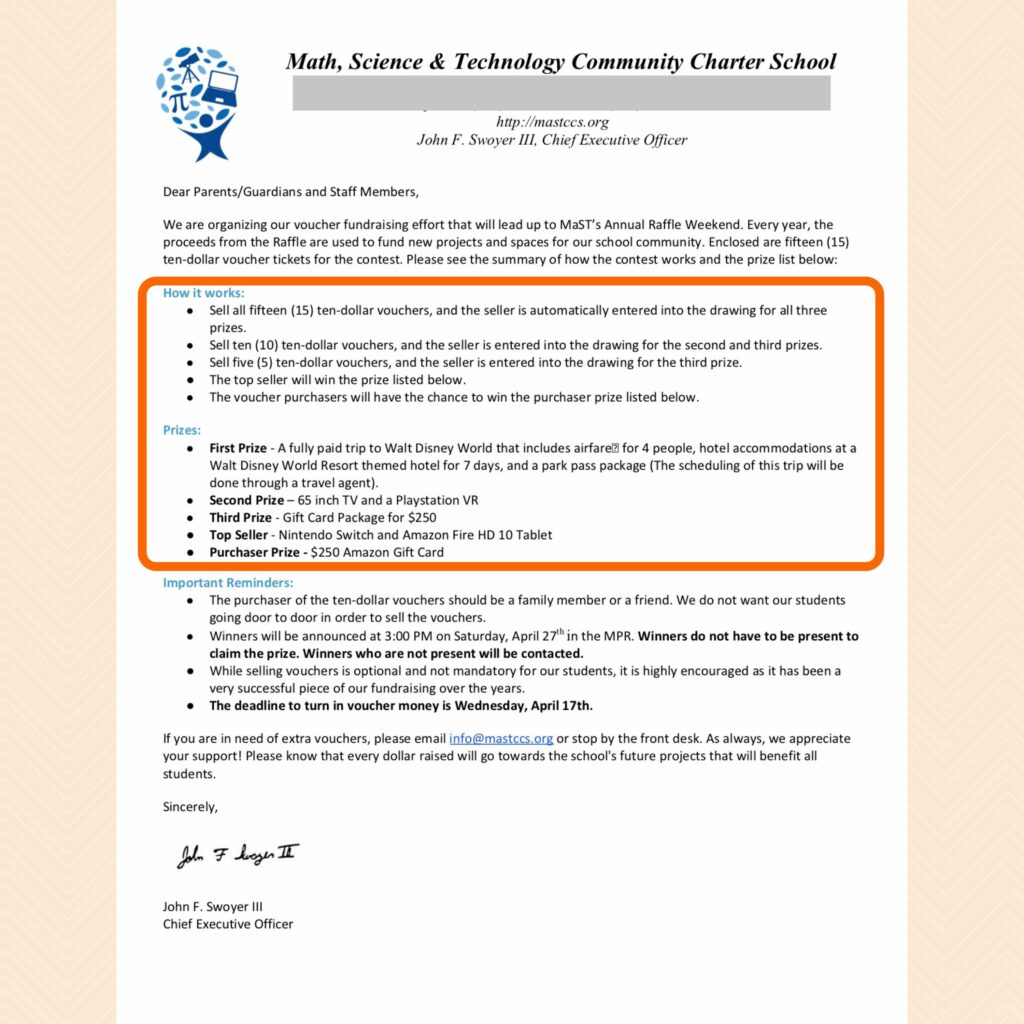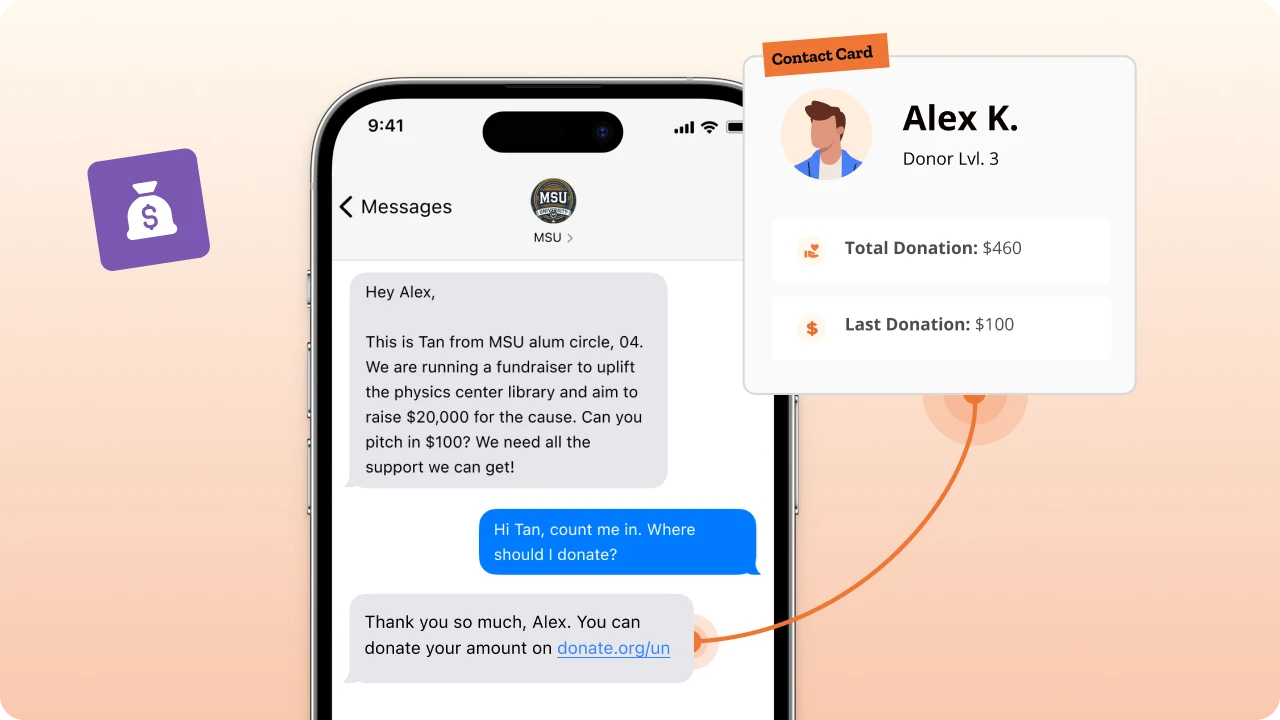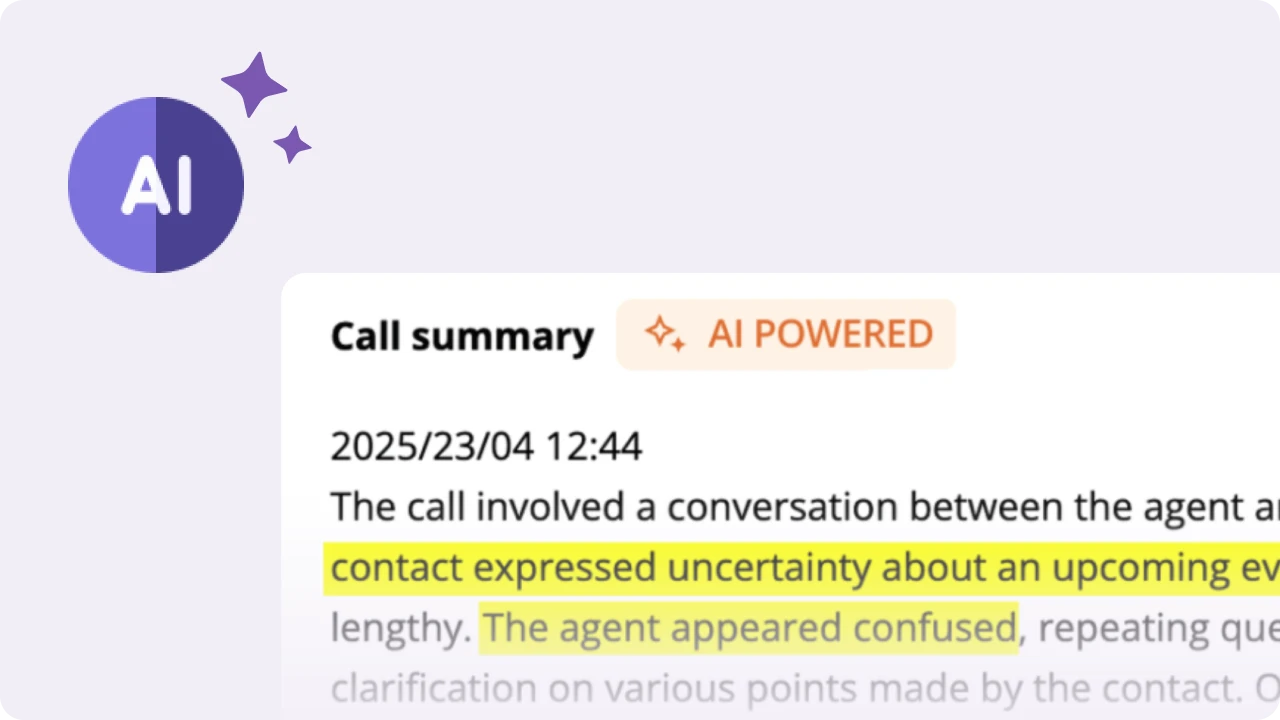Table of Contents
A fundraising letter is a direct, personalized appeal to inspire donations, and it remains as one of the most effective fundraising tools, even in the digital era. 70% of Americans say direct mail feels more personal than digital outreach.
While online fundraising has seen steady growth, research shows that direct mail donation appeals still outperform many digital outreach efforts. For instance, campaigns delivered an average response rate of around 4.4% compared to just 0.12% for email-based appeals.
In this guide, we’ll explore how to craft a high-impact fundraising letter – from structure to examples, so you can boost donor engagement, improve your fundraising message, and maximize return on investment.
TWhat are the main types of fundraising letter?
Fundraising letter vary depending on audience, ask size, and purpose. Here’s a breakdown of common formats and how they differ:
| Type of letter | Purpose/Audience | When to use |
| General donation appeal letter | Aimed at individuals, existing donors | Routine appeals for individual gifts. |
| Sponsorship Request Letter | For event funding ot corporate backers | When you need sponsors rather than general donations |
| Corporate donation request letter | businesses/CSR partnerships | When you’re seeking larger organizational commitments |
| In-kind donation letter | Request goods/items for sale/auction | When you want items instead of – or in addition to – cash |
| Volunteer appeal letter | Engaging supporters for time and effort | When donors can’t give money but can give time |
These various forms all serve the core function of a fundraising letter, whether with wording tailored to a judicial campaign fundraising letter, an end of fiscal year appeal letter sample, or an email asking for donations template. The key is matching the letter type to the ask and the audience.
Read Also: Corporate Giving 2025: How To Tap Into Billions In Funding
How do you structure a successful donation appeal?
This step is crucial in your fundraising wording and serves as the gateway into your overall fundraising message. Every effective fundraising letter follows four clear parts:
- Introduction: Where you make a good impression and compel supporters to keep reading.
- The Body: Where you introduce the problem and make a case for your cause and mission.
- The Ask: This is where you convince folks to contribute and formally make your request.
- Closing: Where you explain how to donate.
Below is how you write each section, along with best practices.
Step 1: The introduction to the fundraising letter

Your intro sets the tone. If you lose your reader here, you lose the chance.
- A personalized greeting (don’t use “Dear supporter” if you can avoid it)
- A short introduction of who you are and why this matters.
- A compelling hook (an emotional story, urgent need, donor’s past involvement)
- A brief mention of past contributions or mission alignment.
| Pro tip: Use segmentation – if this is someone who donated before, reference their past impact. Example wording: “Dear [Name], as someone who helped us provide meals to 300 children last year…” |
Personalization boosts engagement. Research shows that direct email appeals benefit significantly from personal touches – names, tailored messaging, and the sense of “this is for you”.
Read Also: The Trick to Crafting a Compelling Fundraising Letter . This also makes the letter more personal.
Step 2: The body
This is the core of your appeal. The body of a donation appeal must:

- Define the problem: Why is your cause urgent today?
- Provide the solution: What your organization does and what you’re asking for now.
- Provide proof and emotion: A story, statistics, or real-life example.
- Format for readability: Use subheadings, bold text, bullets when appropriate.
| Example: “Last year, your gift of $100 funded a literacy kit for five children. This year, we aim to reach 1,000 children — and your $150 gift will help three more attend school.” |
Why this works:
- It shows personal impact.
- It ties the donor to tangible results.
- It uses clear numbers and a relatable story.
| Pro tip: If you are sending an email asking for a donations template or how to write a GoFundMe Letter, keep the body concise, include a link or button early, and ensure mobile readability. |
Step 3: The Ask
This is where you make your direct request.

Key elements:
- Frame it as donor-centric: what the donor can achieve rather than what your organisation needs.
- Clearly state the ask amount or range (e.g., $50, $100, $250) or alternative ways to help.
- Offer multiple options: monetary gift, in-kind donation, volunteer time, peer-to-peer fundraising.
- Provide clear giving instructions: donation link, QR code, reply device, or text-to-donate.
- Tweak for channel: If this is your “direct mail fundraising letter”, include a reply envelope. If digital, include a simple click-to-give.
| Pro tip: Combining a direct mail fundraising letter with digital follow-ups through CallHub’s SMS and Voice broadcast tools. Sending a reminder text or automated thank-you phone call after your appeal can increase response rates by up to 118% lift, turning a single letter into a multi-touch donor experience. |
Read Also: Direct mail fundraising ideas and making it work for you
Step 4: The closing
Finish strong. Your closing ties it all together.
Include:
- A sincere thank you: “Thank you for your past support and your continued belief…”
- Signature of a senior leader (Executive Director, Campaign Chair): builds trust.
- A P.S. line: since many readers scan this first, use it for urgency or a repeat ask.
- Example: “P.S. If you can respond by November 30, we’ll qualify for a 2-for-1 matching funds.”
- Clear next steps: “Please give via the enclosed reply form or visit our link and enter code X.
Read Also: Gift Programs: The Key to More Nonprofit Funding
Bonus! Fundraising letter template
Here’s a fundraising letter template you can base your donation appeals on:

Quick Checklist: How to write a fundraising letter
Here is a brief and precise checklist for you to go through before you start writing the letter:
- Personalised greeting with donor name
- Brief intro aligning your cause & donor’s past support
- Clear storytelling of the problem and the solution
- Donor-centric ask with clear impacts
- Multiple giving options for flexibility
- Clear mechanics for how to give
- Sincere closing and P.S. to reinforce urgency
- (If mail) Include QR code or link for online giving
- (If digital/email) Make mobile-friendly, concise, and button early
- Track metrics: response rate, cost per dollar raised, donor retention.
Read Also: 5 Best Text Fundraising Platforms for Easy Donations
Example Fundraising Letter Template
Subject: Help us bring clean water to 1,000 families this summer
(Adaptable for direct mail or email/use as your base draft)
Dear [Donor Name],
Last year, your generosity allowed us to build 10 wells across remote communities. This year, thanks to your past support, we aim to bring clean, safe water to 1,000 families by June.
With a gift of $75, you provide one family access to clean water for life.
Will you partner with us to reach this goal today?
[xxxx QR Code or Hyperlink Here]
With gratitude,
[Name, Title]
[Organisation]
P.S. If we receive your gift by June 15, it will be doubled by our corporate sponsor. Your support today makes an immediate difference.
You can adapt this for an email asking for donations template by inserting a strong subject line, making the opening shorter, adding a “Donate Now” button, and ensuring a mobile-first design.
When and why does a direct mail fundraising letter work?
Even in a digital era, a direct mail fundraising letter offers unique advantages:
- Tangible and personal: Many donors say mail feels more personal than email.
- Higher response rates: Direct mail response benchmarks show – 5 – 9% for house lists.
- Support multi-channel: Recipients often go online after receiving mail – email/browsers complement mail.
- Younger audience still responds: Even Millennials and Gen Z reveal interest in physical mail when linked with digital.
Hence, integrating a direct mail fundraising letter into your campaign strategy, especially when paired with digital follow up makes sense for nonprofits and advocacy groups alike.
You can easily coordinate this through CallHub’s integrated communication platform, combining SMS, Voice, and email outreach to follow up on your fundraising letter campaigns.
Read Also: Direct mail fundraising ideas and making it work for you
Moving forward with the fundraising letter
A well-written fundraising letter connects heart and action, but real impact comes from consistent follow-up. Use texting and calling tools to reach donors instantly, send reminders, and boost response rates for every campaign.
Turn your next fundraising letter into real results with CallHub’s fundraising tools today!
Frequently asked questions on fundraising letter
How to write a fundraising letter
To write a fundraising letter, start with a personal greeting and a clear introduction that connects the donor to your mission. Use storytelling to describe the problem, explain how their support creates impact, and include a direct, specific ask (e.g., $50, $100, or $250). Keep the tone personal and donor-centric, showing gratitude throughout.
Tip: Combine your letter with CallHub’s texting or calling tools to follow up with supporters and increase donations.
How to write a fundraising letter asking for donations
When asking for donations in a fundraising letter, focus on the donor’s role in making change happen.
End with sincere thanks and a P.S. that reinforces urgency or impact.
Start with a warm greeting.
Share a short story that illustrates the cause.
Clearly state the donation amount and what it achieves (“Your $100 provides clean water for three families”).
Add an easy way to give: link, QR code, or text-to-donate option using CallHub’s SMS platform.
How to write a direct mail fundraising letter
To write a direct mail fundraising letter, focus on emotional storytelling, readability, and easy response options.
Use large fonts, short paragraphs, and white space for clarity. Include personalisation (donor name, past gifts) and a physical reply envelope.
Enhance your results by integrating mail with digital outreach, like sending an SMS reminder or voice follow-up through CallHub’s outreach tools.
How to write a donation letter for fundraising
A donation letter for fundraising should clearly explain your cause, why it matters, and how the donor can help.
Keep it conversational, heartfelt, and solution-oriented.
Start with the “why,” tell a brief story, then present your “ask” with a clear next step, such as donating online or via CallHub’s text-to-donate feature.
Always end by thanking the donor and showing how their gift creates a measurable impact.
This fundraising letter evokes what kind of tone?
An effective fundraising letter evokes a personal, empathetic, and hopeful tone.
It balances urgency with gratitude, inspiring readers to act while making them feel appreciated and empowered.
Avoid overly formal or transactional language. Instead, write as if speaking one-on-one to a supporter who shares your mission.
Example tone cue: “Because of you, a child will go to school tomorrow with a full stomach and a future in sight.”


